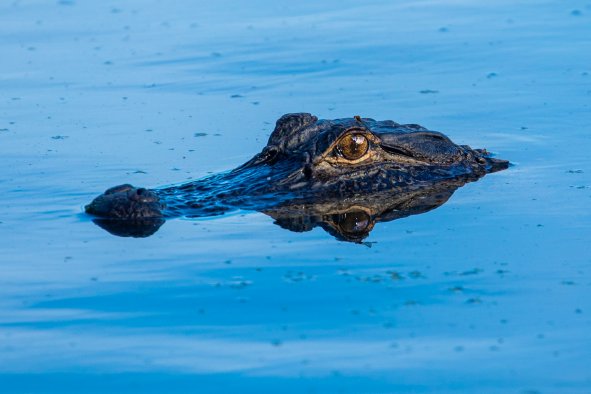Paleontologists have revealed the fossilized remains of a curious creature that is not only one of Earth's oldest animals, but may even be the first to have ever been mobile.
Dubbed Quaestio simpsonorum, the long-extinct species was discovered in the Australian outback by Florida State University geologist professor Scott Evans and his colleagues.
Quaestio lived some 555 million years ago in the so-called Ediacaran Period, a key time in the history of life when complex, multicellular life first evolved.
"The animal is a little smaller than the size of your palm and has a question-mark shape in the middle of its body that distinguishes between the left and the right side," Evans said in a statement.
Quaestio is thus the earliest known animal to have a "left–right asymmetry", an important evolutionary development.
"There aren't other fossils from this time that have shown this type of organization so definitively," Evans said.
Understanding how such forms first arose—from a genetic perspective—can provide a new window into the mechanisms that drove the origins of complex life, Evans explained.
He said, "Because animals today use the same basic genetic programming to form distinct left and right sides, we can be reasonably confident those same genes were operating to produce these features in Quaestio, an animal that has been extinct for more than half-a-billion years."
Quaestio is "especially interesting," he added, as it is also one of the first animals capable of moving about on its own.
In fact, the researchers explained, it is believed that the strange creature behaved like a prehistoric underwater Roomba, roving across the seafloor, vacuuming up nutrients from algae, bacteria and other microscopic organisms as it moved along the slimy seafloor.
Among the research team was Ian Hughes, a graduate student in the field of organismic and evolutionary biology at Harvard University.
He said in a statement: "One of the most exciting moments when excavating the bed where we found many Quaestio was when we flipped over a rock, brushed it off, and spotted what was obviously a trace fossil behind a Quaestio specimen."
As the name suggests, trace fossils do not preserve the body of a creature, but the traces it leaves behind—whether trails, footprints, burrows, or resting impressions.
It is very rare for trace fossils to be linked to the "body fossils" that made them, and often one type of trace can be left by many different species. It is for this reason that trace fossils are named according to their own classification system, distinct to that of biological species.
However, the discovery of a fossilized trail clearly made by a Quaestio shines a light on how the creature would have behaved in life. It was, as Hughes put it, "a clear sign that the organism was motile—it could move."
With their initial study of Quaestio complete, the team are looking to continue their excavations within the Nilpena Ediacara National Park, where the new species was found.
"We're still finding new things every time we dig," said Hughes. "Even though these were some of the first animal ecosystems in the world, they were already very diverse.
"We see an explosion of life really early on in the history of animal evolution."
Do you have a tip on a story that Newsweek should be covering? Do you have a question about fossils? Let us know via science@newsweek.com.
Reference
Evans, S. D., Hughes, I. V., Hughes, E. B., Dzaugis, P. W., Dzaugis, M. P., Gehling, James G., García-Bellido, D. C., & Droser, M. L. (2024). A new motile animal with implications for the evolution of axial polarity from the Ediacaran of South Australia. Evolution & Development. https://doi.org/10.1111/ede.12491
Disclaimer: The copyright of this article belongs to the original author. Reposting this article is solely for the purpose of information dissemination and does not constitute any investment advice. If there is any infringement, please contact us immediately. We will make corrections or deletions as necessary. Thank you.



